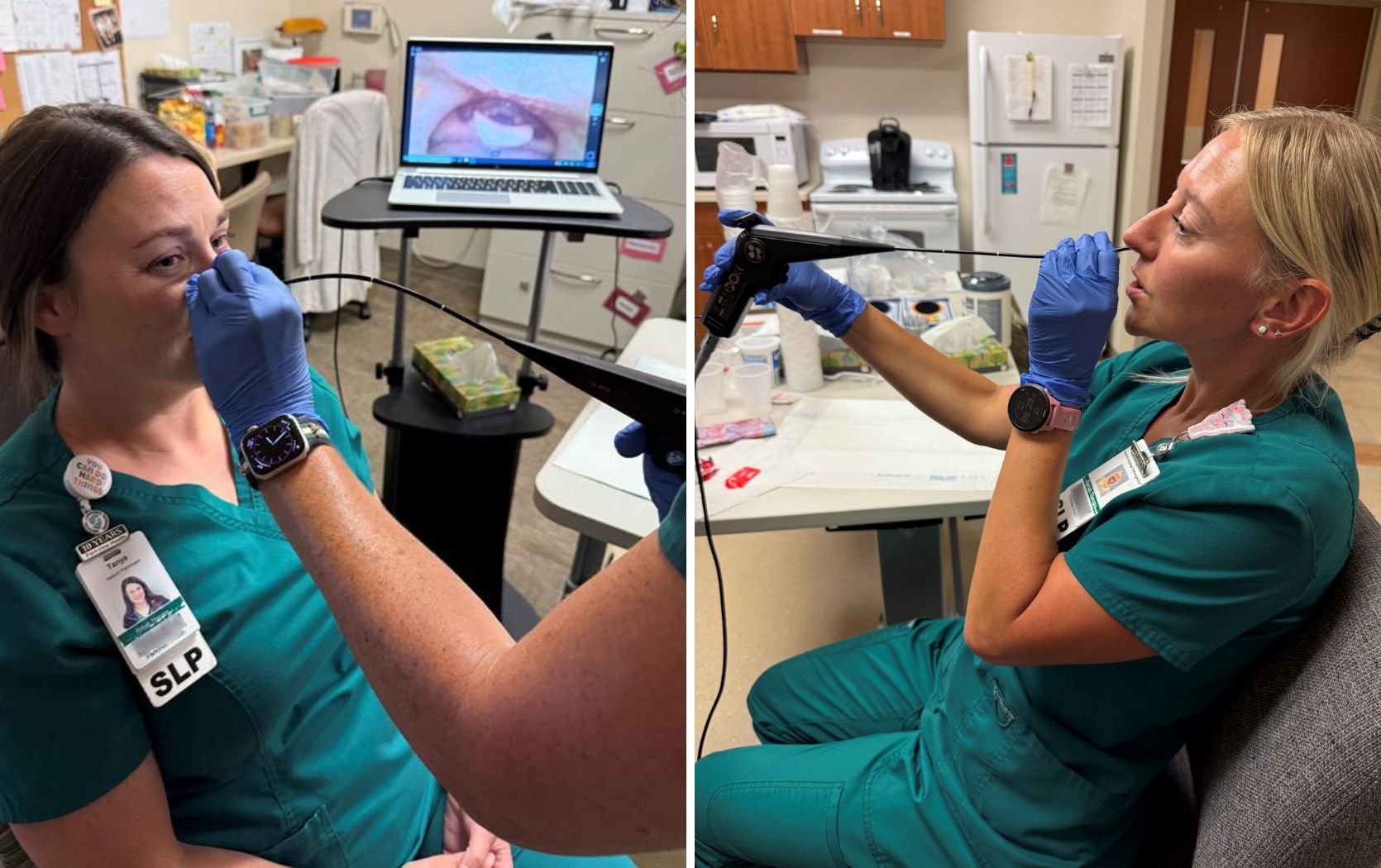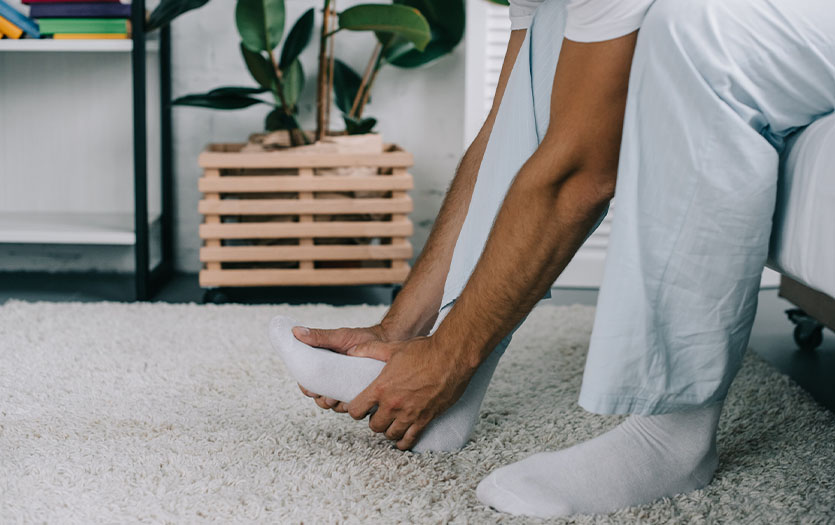
This post was written by Jithmie Jayawickrema, PT, DPT, OCS, and Sean Collins, PT, DPT, COMT, CEAS I, Therapy Services – Southwest, Parkview Health.
The plantar fascia is a thick band of fibrous tissue (fascia) that spans the bottom of your foot. It starts at the heel and extends into the toes to help support your arch and assist in shock absorption when walking. Plantar fasciitis is the term for inflammation of the plantar fascia due to repeated micro-trauma. Understanding what can cause these micro-traumas and some strategies for relief is key to managing the uncomfortable symptoms.
Causes
Some of the common activities that can contribute to plantar fasciitis include:
- An increase in walking or running
- Starting a new weight-bearing activity that you are not used to
- Occupations that require prolonged standing
- Obesity
- Decreased ankle dorsiflexion range of motion, which can be related to tight calf musculature or ankle mobility deficits
Symptoms
While the degree of discomfort and presentation varies by individual, the most common signs of plantar fasciitis are:
- Pain with initial steps in the morning
- Pain when walking after prolonged inactivity
- Pain with prolonged weight-bearing movement or posture
- A sensation that feels like walking on a marble or having a rock in your shoe
- Some pain relief with walking with discomfort returning at the end of the day
- Tight calf musculature
Does overpronating predispose you to plantar fasciitis?
While pronating is part of your normal gait pattern, overpronation is characterized by the flattening of your arch, which increases the amount of stretch that the plantar fascia is under. On the other hand, having more of a rigid foot (not pronating as much) does not allow proper shock absorption and causes compensations that can increase the stress on the plantar fascia. In other words, it appears that both over and underpronators can develop plantar fasciitis.
How can physical therapy help?
With the guidance of a trained physical therapy professional, those suffering from plantar fasciitis can manage symptoms. Some of the ways a PT can support is by facilitating:
- Stretching of the calf musculature
- Improving ankle dorsiflexion mobility
- Improving big toe mobility (Remember, the plantar fascia extends to your toes!)
- Manual therapy to address the soft tissue tightness in the calf musculature
- Taping techniques to address foot pronation
- Intrinsic strengthening of the foot (small muscles in the foot that support arch and other movements)
- Dry needling to address soft tissue restrictions in the calf musculature
- Prescription for night splints
- As we sleep, we naturally point our toes down which keeps our calf muscles tight. A night splint can keep your foot in a neutral position, allowing it to stretch. Studies have shown that these splints need to be worn for at least 1-3 months.
- As we sleep, we naturally point our toes down which keeps our calf muscles tight. A night splint can keep your foot in a neutral position, allowing it to stretch. Studies have shown that these splints need to be worn for at least 1-3 months.
Stretches you can do at home
Stretching is a key piece of symptom management for those with plantar fasciitis. Try these stretches 2-3 times a day. For each, hold the stretch to your tolerance (20-30 seconds x 3 times).
Gastroc stretch
Place your hands on the wall and extend the leg you are stretching back. Keep your knee straight and heel on the ground. Lean forward until you feel a stretch in the calf.
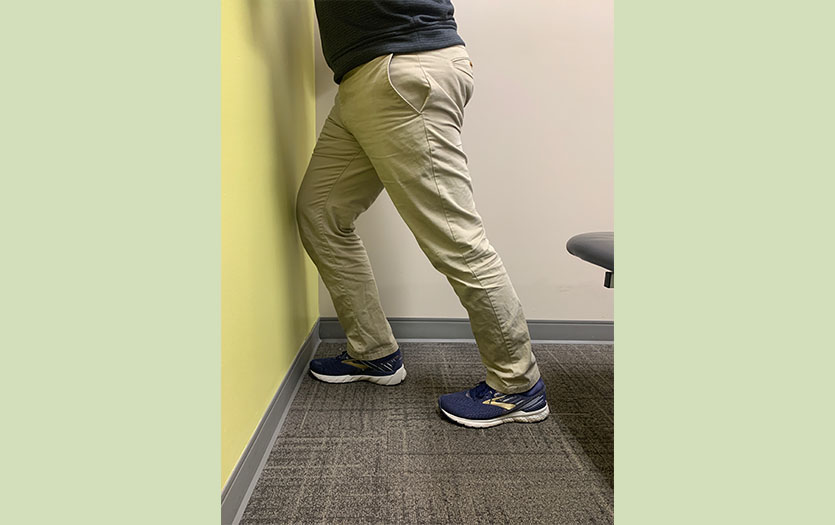
Soleus stretch
Place your hands on the wall and extend the leg you are stretching back. Keep your knee bent. Keep your heel on the ground and lean forward until you feel a stretch in the lower part of your calf.
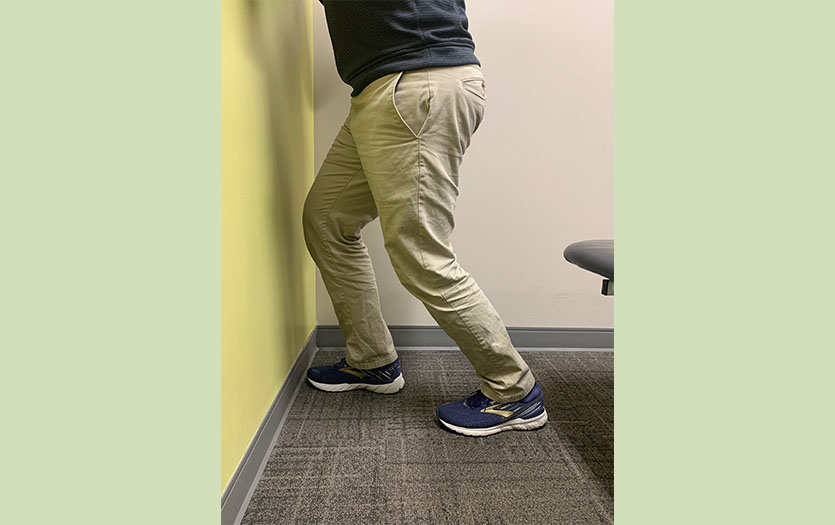
Plantar fascia stretch
Sit in a chair and cross the affected leg over the other. Use one hand to hold your ankle and the other to hold your toes. Pull your toes back until you feel a stretch in the bottom of your foot.


Self-massage you can do at home
To massage the affected area, roll your foot on a tennis or lacrosse ball or frozen water bottle to aid smaller foot muscles for 2-3 minutes. You can sit or stand for this technique. Try to roll the ball from your heel to your toes for the prescribed amount of time. Remember that you get to control how much pressure you put through the ball and can adjust to your tolerance.
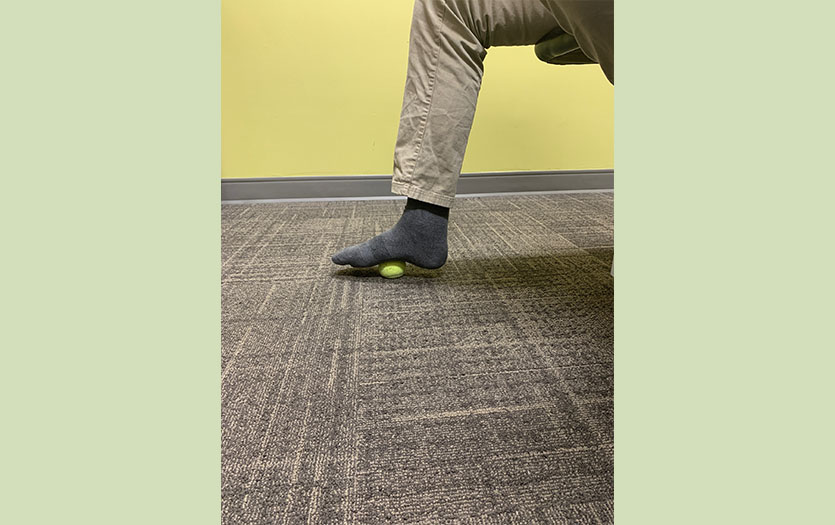
For more information, or to schedule with one of our expert physical therapists at any of our locations, call 260-266-7400.
References


